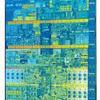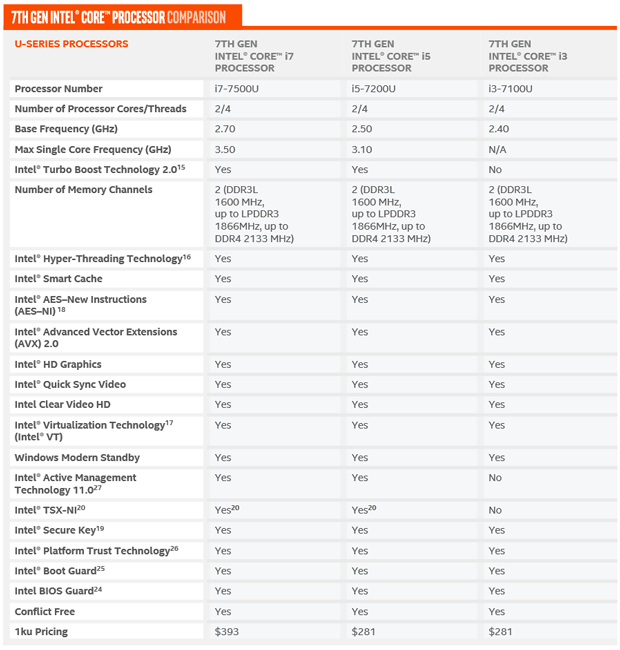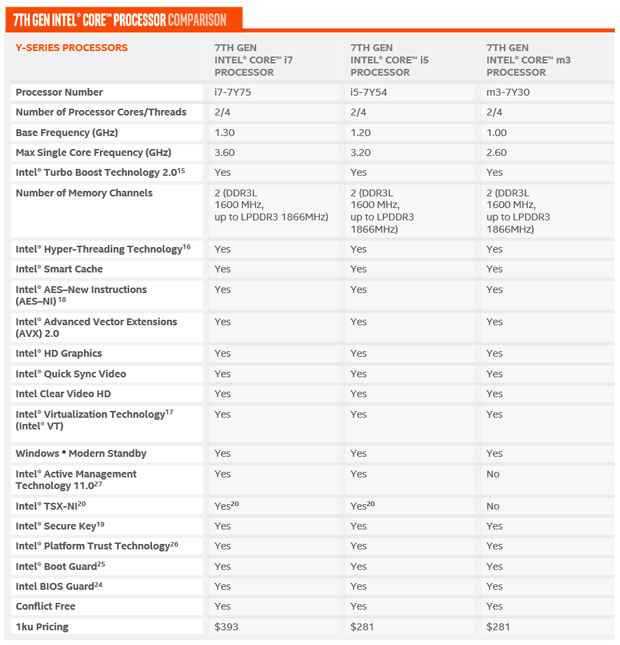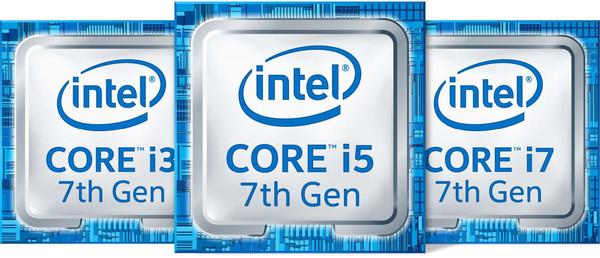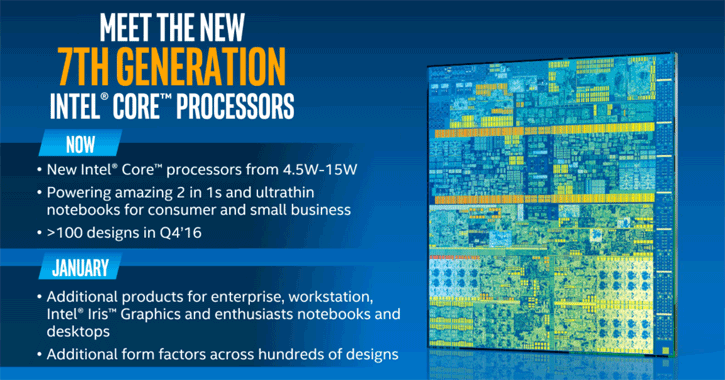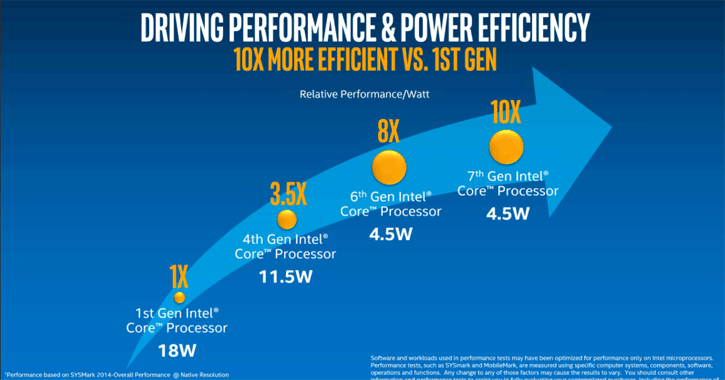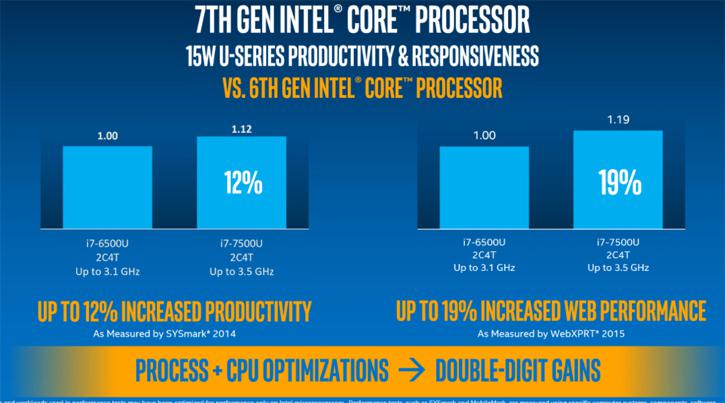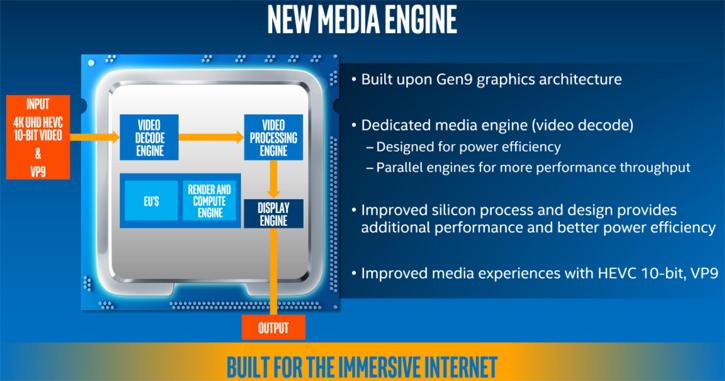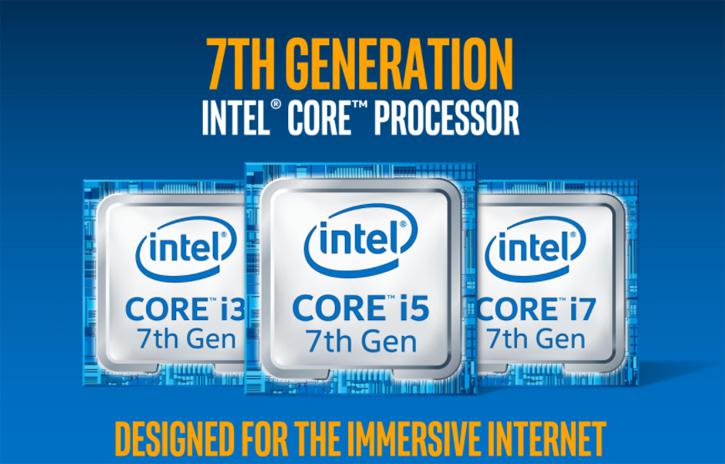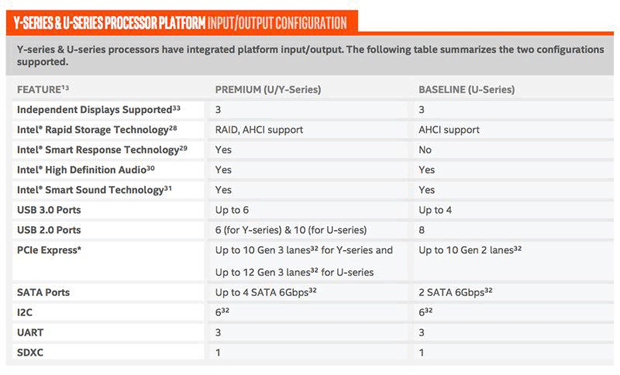Intel today is announcing some 7th gen processors, the six processors released are Kaby Lake based. This initial launch is aimed at the mobile segment only, thus no desktop parts have been unleashed. The newer and faster then SkyLake products have new video en- and decoding capabilities. Kaby Lake is Intel's codename for the 14 nanometer successor to the Skylake microarchitecture.
Skylake initially was to be succeeded by the 10 nanometer Cannonlake, but it was announced on July 16, 2015, that Cannonlake has been delayed until the second half of 2017. Meaning that on 14nm another architecture has been injected, Kaby Lake. In short, Kaby Lake is a overhauled 14nm Skylake with a efficiency and power improvements. It’s the processor series that bridges the gap towards 10nm Cannonlake, which Intel has planned for 2017.
Kaby Lake is that second "tock" in Intel’s tick-tock strategy, Kaby Lake isn’t really going to differ much from SkyLake in power or performance improvements, it's more about multiple streams of 4K content, 360-degree videos, virtual / augmented reality applications.
Kaby Lake will add native HDCP 2.2 support, along with full fixed function HEVC Main10/10-bit encode and decode and VP9 10-bit hardware video decoding. Kaby Lake will also add native USB 3.1 support, whereas Skylake motherboards require a 3rd-party add-on chip in order to provide USB 3.1 ports. It will also feature a new graphics architecture to improve performance in 3D graphics and 4K video playback.
Next to these changes Kaby Lake is fairly similar to SkyLake. There are improvements to Kaby Lake's performance though. Intel claims it optimized its 14-nm tri-gate process. This basically upholds that at transistor level the FiNFETs get taller fins with a wider gate pitch. Intel is referring to this as the 14-nm plus process technology. This optimization will yield into faster-switching transistors that are good for what Intel describes as "four or five speed bins" of extra clock speed. That would mean roughly 400 to 500 MHz higher Turbo frequencies at the top end of a processor range. These claim backs what we have seen from the desktop processors leaks.
Intel today reveals six Kaby Lake products:
- Three 4.5 Watt "Y" CPUs and
- Three 15 Watt "U" CPUs.
The First 7th Gen Products are mobile. Today's launches are CPUs in the U and Y series, intended for thin and light portables such as notebooks and 2-in-1s. The Y-series CPUs are rated for 4.5W of power consumption and can run without a cooling fan and are aimed at the thinnest laptops and tablets. U-series CPUs are rated for 15W and will be used in more mainstream laptops. Today's released six Kaby Lake products include a dual-core 3.1GHz Core i5-7200U and 3.5GHz Core i7-7500U, both of which have two CPU cores with Hyper-Threading and support DDR4 RAM; and the Core i7-7Y75, which is also a dual-core part with Hyper-Threading but has a base clock of 1.3GHz and can turbo up to 3.6GHz on demand, and uses DDR3L RAM.
Please look at the tables for the specific details. In the months to come (late Q4 2016 or early Q1 2017) we'll have to away the actual desktop products and how much they benefit from the 14-nm plus process technology.
